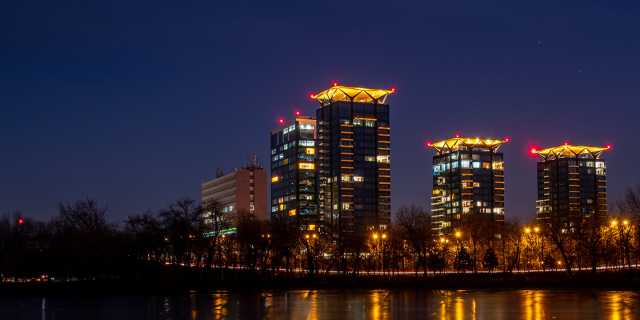The initiative to build a subway line in Bucharest existed from 1909-1910. The initial plans were based on a series of negotiations with Siemens & Halkse, which aimed to build tram lines. As the Belgians demanded a very high price for this project, engineers Elie Radu and Dimitrie Leonida came up with the idea of allocating this budget to create a metro line. In fact, Dimitrie Leonida had already dealt with this subject since 1908, during his bachelor's thesis.
However, the project did not materialize, so between 1929-1930, a commission under the leadership of architect Duiliu Marcu resumed the proposal. They weren’t successful this time either, the reason being that surface transport was a more convenient option.
New initiatives were launched in the early 1940s, with targeted routes being the Hippodrome-Unirii Square, Bucharest East Station-Academy Road, and North Station-Victoriei Square. Against the background of the outbreak of World War II, however, the project had to be postponed.
On February 15, 1972, the decision was made to set up a commission responsible for drafting concrete proposals for the construction of the subway network, and on February 1, 1975, the Bucharest Metro Company was launched, entrusted with the construction project. The actual work started on September 20. Initially, the project advanced at a rate of 2 kilometres per year, later reaching a double rate.
After four years of work, on November 16, 1979, the first subway line, M1, was put into operation. However, the moment of the inauguration came a month later, on December 19. With a length of 8.1 kilometres, it covered six stations: Semănătoarea, Grozăvești, Eroilor, Izvor, Unirii, and Timpuri Noi.
Unlike other countries in the region, which manufactured subway trains using the Soviet model, Romania had its own production line. The colours used at the first stations were white, grey, and orange.
The first section of the second line of the network was inaugurated in January 1986. The new route started from Unirii II Square and had eight stations, up to the IMGB depot, thus joining this third industrial area of Bucharest to the city centre. The second section of the line was opened in the autumn of 1987, in October, covering six stations, and in the summer of 1989, the third line was put into operation, which connected the North Station to Dristor 2.
In the spring of 2000, line 4 was launched, extending over a length of about four kilometres, with four stations. Another important milestone in the history of the Bucharest metro was reached on July 1, 2011, when a new 2.62-kilometer segment was put into use, on route 1 Mai - Jiului - Parc Bazilescu.
In 2011, the works on Line 5 were also started, considering the creation of a bridge between Drumul Taberei and Pantelimon neighbourhoods. In the future, the expansion plans aim at arranging two new lines, which will connect Pajura-1 Mai with Otopeni Airport, and Bragadiru with Voluntari.
Along the way, some lines were expanded, and some stations were renamed. Among the architects who have contributed over time to the expansion of the subway network were Manuela Antip, Gheorghe Beznilă, Adriana Bunu, Dan Costinescu, Viorica Curea, Lia Dima, Geta Gabrea, Ion Marineci, Clement Moldoveanu, Victoria Navrescu Radu, Alin Negoescu, Ioan Novițchi, Alexandru Panaitescu, Ileana Papina, Doina Patra, Ion Podocea, Bogdan Popovici, and Cătălin Stanciu.
Currently, the Bucharest metro network includes 63 stations on five lines.
Data for this article was obtained from metrorex.ro, historia.ro și wikipedia.org. Photo credit: unitysphere.
More on our blog
- One Insider
- Real estate: past, present and future
- Layout and style
- Real estate education
- Free time in Bucharest
- Tourist attractions in Bucharest
- The neighborhoods of Bucharest
Read also






